14 heavy metal drumming tips and techniques
Essential tricks and pro advice for budding metalheads

Technique: Tuning
Following the essential guide to heavy metal drum gear, now it’s time to figure out how to coax some convincingly metal sounds from the kit. Courtesy of Rhythm magazine, here you’ll find five killer techniques, eight priceless tips from the pros, and one essential metal drummers’ checklist. Ready? Good, let’s start with tuning…
Metal drum sounds have become more and more processed over recent years with huge toms, clicky bass drums and cracking snares being the order of the day in most cases. While a lot of this is down to the way the drums are miked and processed, the tuning of the drums themselves is of huge importance.
To begin with, toms should be tuned to a medium/low tuning, with the floor toms showing wrinkles when the hand is pressed into them. And while tuning the bottom heads to the same pitch as the top will produce the most tone and sustain, tuning the bottom heads slightly lower will shorten the sustain and introduce some pitch bend, which is often preferable.
In metal, the snare is often quite high in pitch and tension and although it feels good to play it’s important to appreciate that, under a mic, a cranked up head can sound thin - so this is often an area of compromise.
Finally bass drums should be tuned low, with the same wrinkle effect as the floor toms. They’ll also need some dampening to enhance the thud by reducing the overtones and sustain. Some metal drummers tend to favour placing pads on the head at the point of beater impact in order to increase the ‘click’ - however this quality is easily ‘dialled in’ using EQ when using a decent mic.
Next: rimshots
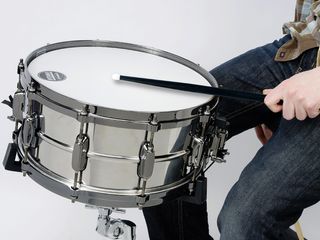
Technique: Rimshots
As well as hitting hard, a metal drummer will usually hold his own in a mix full of distorted guitars by hitting rimshots on the snare.
This involves hitting the centre of the drum and the rim at exactly the same time, every time and can take some practice to get consistent, but it adds a sharp, cutting quality to the snare sound.
Next: Hi-hats and X-hats
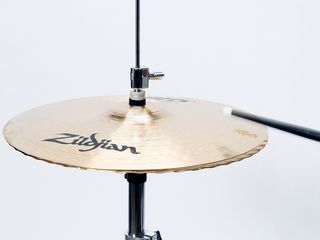
Technique: Hi-hats and X-hats
In metal hi-hats are usually played slightly open for a trashy sound with some players even setting the clutch quite low so as to play the double pedal without affecting the hi-hat sound. However this will compromise the open and closed sound from the hi-hats, which is where X-hats, free standing hi-hats usually on the opposite side of the kit, come in.
They enable the drummer to set regular hi-hats more open and mean the left hand has access to the rest of the kit, whether playing double kick drums or not.
Finally, be sure not to clamp the top hi-hat cymbal too tightly in the clutch as it will need to be free to move. Failure to do this can damage the top hi-hat cymbal, causing it to crack in the worst case.
Next: cymbal chokes
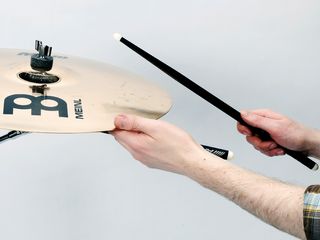
Technique: Cymbal choke
One essential metal drumming sound is the cymbal choke where the decay of the cymbal is stopped short to create an aggressive punctuation in the music. The choking action is usually done using the opposite hand to that which hits the cymbal.
However, as you get more proficient it is possible to crash and choke with the same hand, and for maximum effect it’s worth practising this using either hand. Choking the cymbal is usually done over individual bass drum hits. However it can also be very effective when played over double bass drum patterns.
Next: riding the crash

Technique: Riding the crash
As hi-hats have become more openly and aggressively played, so the dynamic of the rest of the drum kit has had to increase, to the point where simply moving over to the ride cymbal is no longer enough to achieve a lift in the music.
As a result, most metal drummers now frequently play the ride part on a crash cymbal or sometimes even a china cymbal in order to create an appropriate shift in dynamics. This is best done on a larger cymbal, usual 18" or upwards, so as to create desired wash or spread.
Next: Pro tip: Justin Foley: “Work on your foot technique”

Pro tip: Justin Foley: "Work on your foot technique"
"Lead with your weaker foot. Not only will it help develop the strength in your foot, more importantly it will help you develop your own mental awareness of what that foot is doing."
Next: Pro tip: Chris Adler: “Get your pedal right first”
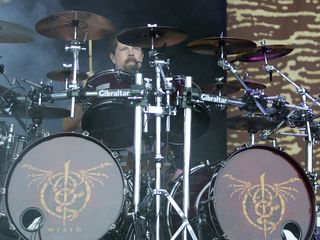
Pro tip: Chris Adler: "Get your pedal right first"
"If you don’t have a lot of money, the one thing you want to spend money on, and find what is comfortable for you, is your pedals. You can get away with a crappy drum kit but if your feet aren’t comfortable trying to do that stuff, it’s never going to work."
Next: Pro tip: Derek Roddy: “Concentrate on the spaces between”

Pro tip: Derek Roddy: "Concentrate on the spaces between"
“You might think playing a shuffle at 40bpm is boring, but that improves your fast playing because you don’t concentrate on the notes themselves, you concentrate on the space in between the notes.
"The most important thing in extreme metal is not the speed but the consistency of the notes. For metal drummers it’s very important to be able to fast blast-beat at the same volume you play something slow and driving.”
Next: Pro tip: Vinnie Paul: “Pace yourself”
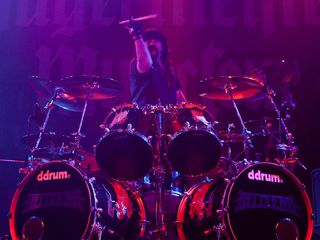
Pro tip: Vinnie Paul: "Pace yourself"
"It’s like being an athlete and doing a two-mile run. You don’t want to blast all your energy. I’m a really hard player so I drink a lot of water onstage and have a fan up there to keep the air moving."
Next: Pro tip: Daniel Erlandsson: “Work out”
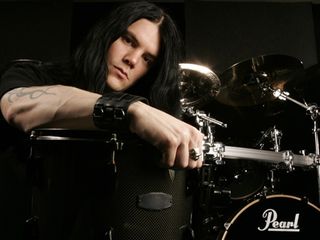
Pro tip: Daniel Erlandsson: "Work out"
"I’ll practise a lot when I’m at home, just on my own, to a click track. I also do a bit of running to stay in shape. This is basically like a sport, especially when you’re doing 90-minute headline shows."
Next: Pro tip: Mike Wengren: “Prepare for gigs”
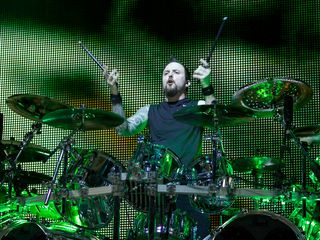
Pro tip: Mike Wengren: "Prepare for gigs"
"Before a show, I spend an hour in the dressing room getting in the zone. I have a playlist on my iPod with bands to get me pumped up, like Pantera, Machine Head, Lamb Of God. I do stretches from head to toe to loosen up. Then I start playing a few simple rudiments on a practice pad or run through some of my parts.
"Before leaving for stage the band has a customary shot of Jägermeister and then it’s time to throw down!"
Next: Pro tip: Joey Jordison: “Work hard”
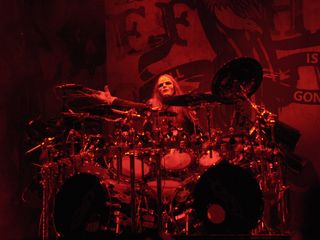
Pro tip: Joey Jordison: "Work hard"
"To the younger readers I say, you’ll never learn to play it all, but always strive to. Keep working as much as you can. Eventually it will happen as long as you have the will and strive to be a good drummer."
Next: Pro tip: Dave Lombardo: “Start with AC/DC”

Pro tip: Dave Lombardo: "Start with AC/DC"
"Play along to whatever you can properly play. Start at AC/DC. After a while try some early Judas Priest and maybe bring in some double bass stuff. If you’re doing good there, move on to the next record."
Next: the metal drumming checklist

The metal drumming checklist
The metal drumming checklist
- Hit hard, and consistently
- Use semi-open hi-hats to create a sense of power
- Ride a crash cymbal or china to take things up a gear
- Hit rimshots on the snare drum
- Underpin fills around the kit using the double kicks
- Where possible hit two drums or cymbals simultaneously for a fatter sound
- Use heavier sticks for a fuller sound
- Choose double-ply heads for a thicker sound
- Wear earplugs/hearing protection
- Get tattoos and piercings
Liked this? Now read: Heavy metal drum gear: an essential guide
Connect with MusicRadar: via Twitter, Facebook and YouTube
Get MusicRadar straight to your inbox: Sign up for the free weekly newsletter
Most Popular







